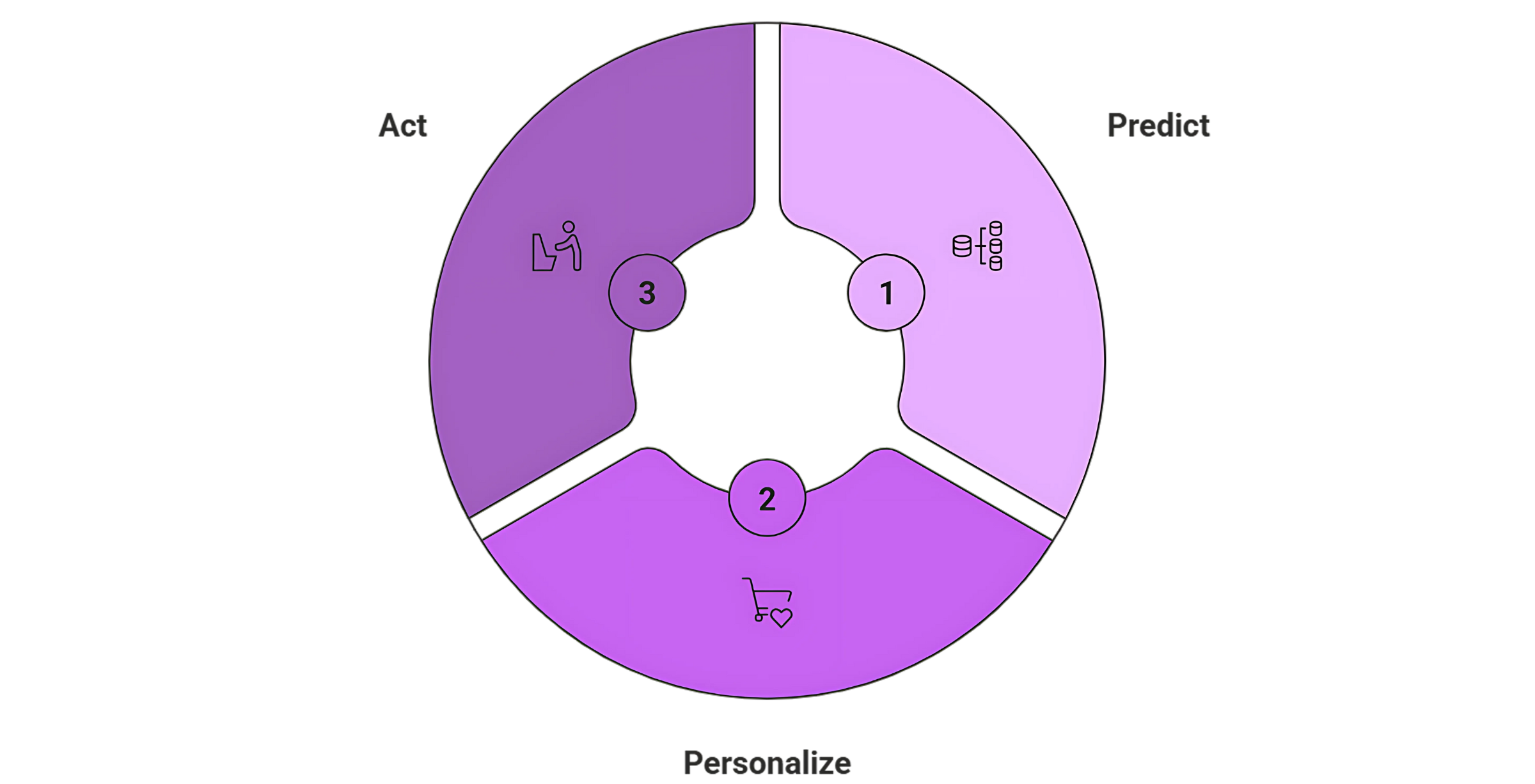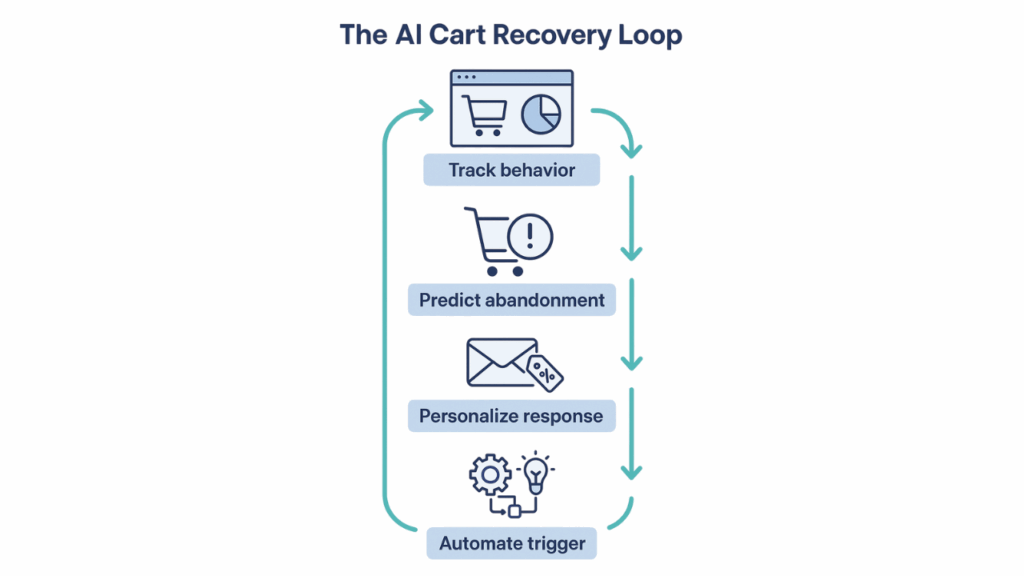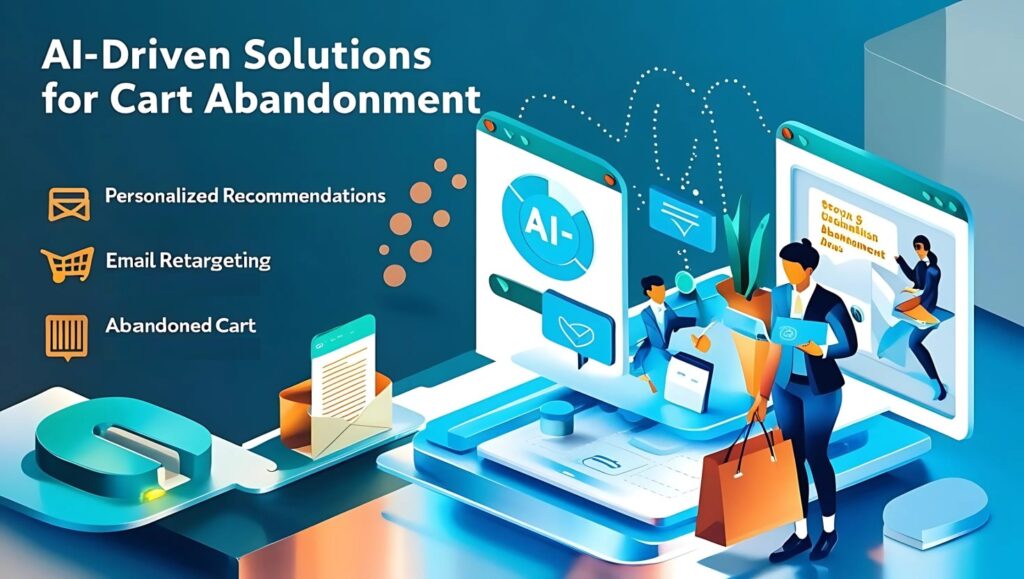Online shoppers abandon over 70% of shopping carts across industries – a staggering figure that translates to $4.6 trillion in lost sales annually. And while businesses scramble with reminder emails and discounts, most of these efforts rely on outdated, one-size-fits-all tactics.
The new frontier? AI-driven cart abandonment solutions. These aren’t just more efficient – they’re smarter, contextual, and continuously learning. Instead of reacting to lost carts, AI helps prevent, recover, and convert them with predictive precision.
This blog explores how AI-powered systems are transforming the cart recovery playbook, backed by real-world brand examples, industry data, and actionable insight.
Understanding Why Shoppers Abandon Their Carts
To solve the problem, we first need to diagnose it. Cart abandonment isn’t just about price or product; it’s about experience friction.
Common causes include:
- Unexpected costs at checkout
- Confusing navigation or long forms
- Lack of trust or security features
- Price comparison behavior
- Site performance issues
- Limited payment options
- Waiting for deals or coupon codes
These issues vary widely across users and sessions, making manual intervention ineffective. That’s where AI excels – identifying patterns across millions of micro-behaviors.
Why Traditional Tactics Fall Short?
Conventional cart recovery relies heavily on rules-based logic:
“If a cart is abandoned, send an email in 1 hour, then another in 24.”
But this static approach doesn’t account for who the shopper is, why they abandoned, or how they prefer to re-engage.
Here’s how traditional and AI-powered methods stack up:
Traditional vs. AI-Powered Cart Recovery
| Feature | Traditional Recovery | AI-Powered Recovery |
| Trigger Timing | Static (e.g., 30 mins) | Dynamic (based on user behavior) |
| Message Personalization | Generic | Customized by preferences and behavior |
| Segmentation | Rule-based | Predictive, behavior-informed |
| Discount Strategy | Blanket discounts | Optimized (or removed) based on intent |
| Channels Used | Mostly email | Omnichannel: SMS, push, chatbot, in-app |
AI doesn’t just automate – it adapts. By learning from user behavior in real-time, it can intervene earlier, more intelligently, and more persuasively.
The Three Core Capabilities of AI-Powered Cart Recovery
AI transforms cart abandonment recovery using a predict-personalize-act loop. Here’s how it works:

1. Predict: Spotting Abandonment Before It Happens
AI analyzes behavior signals such as:
- Scroll depth
- Cursor movement
- Time spent on checkout fields
- Product revisits
- Session frequency
From these, it assigns an abandonment likelihood score to each session. This predictive ability enables proactive engagement, like offering support or personalized reminders before the user leaves.
2. Personalize: Tailoring the Message and the Medium
Once risk is identified, AI determines:
- What messaging resonates (e.g., urgency, trust, social proof)
- Which channels are effective (email, SMS, chatbot, push)
- What timing suits each user’s history (even down to the hour)
AI also decides whether a discount is necessary, and how much. This reduces the overuse of offers and preserves profit margins.
3. Act: Automated, Real-Time Execution
AI doesn’t wait for marketers to trigger flows. Once a signal is strong enough, it acts:
- Deploys personalized nudges
- Sends reminders at the right moment
- Engages chatbots or retargeting ads
This loop – predict, personalize, act happens continuously and at scale.
Understanding the AI Cart Recovery Loop
AI-powered cart abandonment solutions operate through a continuous loop of detection, prediction, action, and refinement. This system ensures that every user behavior becomes a data point feeding smarter recovery strategies over time.
Let’s break down the four key stages in this AI-driven cart recovery loop:

1. Track Behavior
It all starts with real-time monitoring of user actions – like product views, cart additions, navigation flows, and exit patterns. These insights help identify when and why users abandon carts, forming the data backbone for the next stages. As the system ingests more sessions, it continuously learns which behaviors signal intent versus hesitation.
2. Predict Abandonment
Machine learning models analyze behavioral signals to calculate the probability of abandonment. For example, if a user hesitates on the payment screen or switches devices mid-session, the model assesses this as high-risk. Over time, AI fine-tunes these predictions by comparing current behaviors with past abandonment patterns and adjusting for new customer segments.
3. Personalize Response
Once a session is flagged, AI generates a context-specific recovery strategy. This might involve sending a personalized product reminder, offering a time-limited discount, or triggering social proof (“Only 2 left!”). Each message is customized by cart value, user history, and persona, while performance data continuously refines tone, timing, and content relevance.
4. Automate and Optimize Delivery
AI then selects the most effective channel (email, SMS, push, or even retargeting ads) and deploys the message at the right moment. These trigger points are optimized through testing – learning from open rates, click-throughs, and conversions. Every delivery adds to the model’s feedback loop, enhancing future engagement and recovery rates without human intervention.
Real-World Case Studies: Brands Using AI to Reduce Cart Abandonment
Let’s look at how leading retailers are applying these methods in practice.
Sephora: Smart Segmentation for High-Intent Shoppers
Sephora used AI to identify why users abandoned, not just what they left behind. Those needing product education got tutorial links; others saw urgency-focused reminders. The result? 20%+ lift in recovered carts through smarter segmentation.
ASOS: On-Site AI Nudges with Real-Time Assistance
ASOS deployed AI that reads cursor hesitation and device switches. If friction was detected, a chatbot popped up with size suggestions or an FAQ, reducing abandonment by 15% in a single quarter.
Nordstrom: Timing Optimization for Email Triggers
Nordstrom realized not all shoppers respond at the same time. Their AI studied open rates and site activity, then personalized send-times. This boosted cart email conversions by 18%.
When AI Recovery Works Best?
AI isn’t magic, but it thrives where complexity, scale, and behavior matter.
When AI Outperforms Rules-Based Recovery
| Scenario | Rules-Based | AI Advantage |
| Predicting mid-session abandoners | ❌ | ✅ |
| Re-engaging based on time-of-day | Limited | High |
| Omnichannel sequencing (SMS + push) | Manual | Automated |
| A/B testing discount thresholds | Time-heavy | Continuous |
| Recognizing repeat deal-seekers | Difficult | Instant flag |
AI’s Impact on Recovery ROI Across Industries
Based on benchmark data, AI consistently improves conversion recovery rates across major verticals.
AI Recovery Impact by Industry
| Industry | Avg. Abandonment Rate | AI Recovery Lift | Est. Revenue Uplift (Mid-size) |
| Fashion & Apparel | 72% | +20% | $3.5M+ annually |
| Consumer Electronics | 68% | +18% | $2.8M+ annually |
| Home & Furniture | 74% | +22% | $4M+ annually |
| Beauty & Wellness | 70% | +20% | $1.2M–2M annually |
Source: Baymard Institute, McKinsey Digital Benchmarks
Implementation Models: Choosing the Right AI Strategy
Not all businesses need to build complex AI systems from the ground up. The right implementation model depends on the size of your operation, data maturity, and how deeply you want to integrate AI into your commerce stack. Broadly, there are three strategic models for deploying AI in cart recovery:

1. Plug-and-Play Integrations
For small to mid-sized businesses, off-the-shelf AI tools integrated into popular eCommerce platforms (like Shopify or WooCommerce) can offer quick wins. These solutions come pre-trained to recognize abandonment signals and execute automated responses like email sequences, SMS nudges, or push notifications.
The advantage? Minimal setup, no in-house AI expertise required, and fast ROI. However, they’re limited in how much they can be customized or trained on your specific customer behavior.
2. API-Driven Customization
Larger businesses or those with unique buyer journeys often opt for more control. AI platforms that offer open APIs let teams train algorithms on their own customer data, build custom workflows, and plug into CRMs or CDPs.
This middle path balances sophistication and flexibility, allowing brands to craft more nuanced recovery strategies without reinventing the wheel.
3. Fully Embedded AI Systems
Enterprise-level players and AI-native brands might embed machine learning models directly into their product and marketing infrastructure. These systems continuously analyze behavior across channels, feed predictions into real-time personalization engines, and fine-tune recovery tactics at scale.
While costly and complex, this model delivers the highest performance, especially for high-volume retailers operating across multiple regions and product lines.
Choosing the right model isn’t just a tech decision – it’s a strategic one. Brands should assess their internal capabilities, tech stack compatibility, and appetite for experimentation before committing to any one path
Best Practices for Maximizing AI Recovery Performance
AI is powerful, but performance depends on how it’s implemented. Consider these tactics:
- Combine behavior and intent data, not just cart contents.
- Use dynamic discounting – not every abandoner needs an offer.
- Personalize across channels, not just emails.
- Test nudges, not just incentives – FAQs, size guides, and delivery ETAs can reduce drop-off.
- Continuously feed performance data back into your AI system to improve over time.
Conclusion: From Friction to Conversion – AI Is Redefining Recovery
Cart abandonment may never be fully avoidable, but with AI, it’s far more manageable. By predicting user drop-off, personalizing interventions, and automating recovery workflows, businesses are turning what used to be lost revenue into a powerful retention opportunity. The key isn’t just in recovering carts – it’s in creating smarter, more responsive customer journeys. At NoCrew, we help eCommerce teams implement AI-driven strategies like these to reduce friction, accelerate recovery, and increase customer lifetime value – without adding complexity. Get in touch with us.


